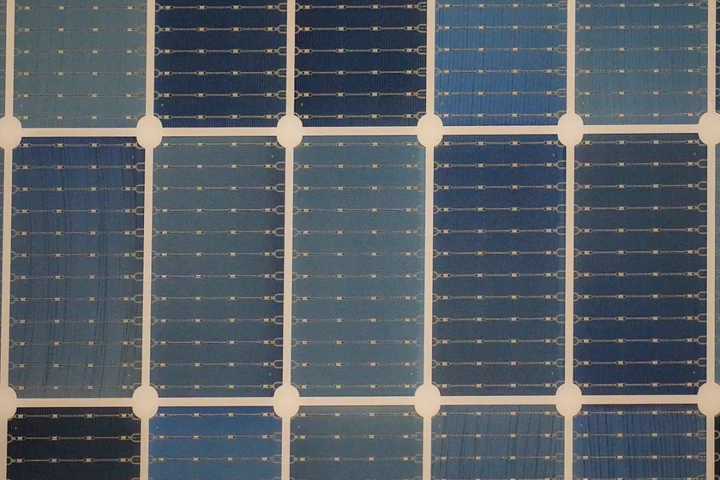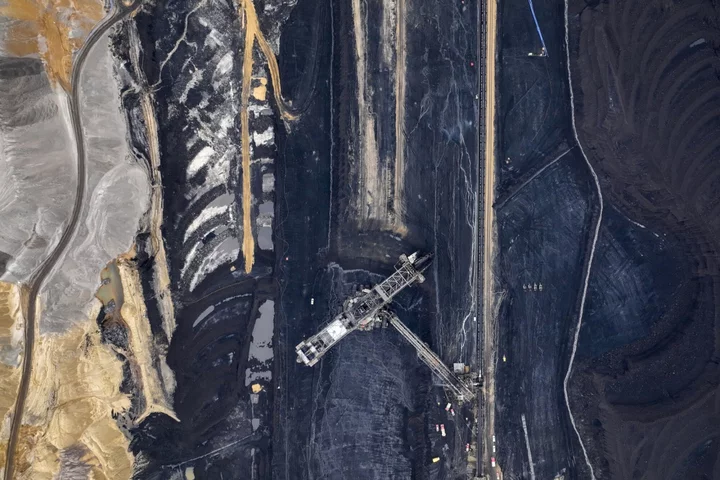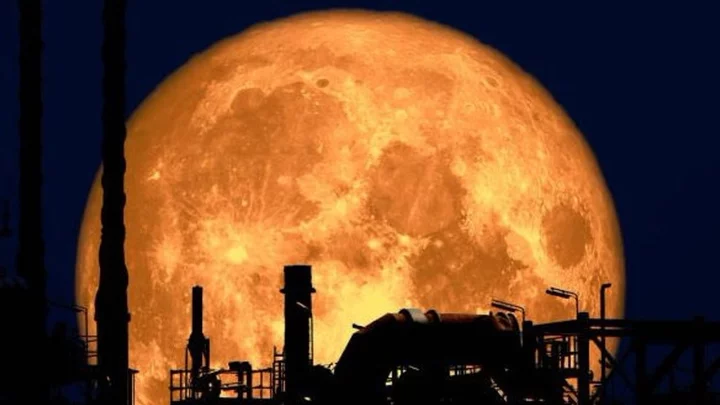
Solar energy set to eclipse fossil fuels as world passes ‘tipping point’, study reveals
Solar energy has reached an “irreversible tipping point” that will see it become the world’s main source of energy by 2050, according to a new study. Researchers at the University of Exeter and University College London analysed recent technological and economic advances to determine that the transition to clean energy is not just reachable, but inevitable. “The recent progress of renewables means that fossil fuel-dominated projections are no longer realistic,” said Femke Nijsse from the University of Exeter. “Using three models that track positive feedbacks, we project that solar PV will dominate the global energy mix by the middle of this century.” Barriers may still arise to hamper this positive trend, the researchers noted, including political resistance from anti-environmentalists and the lack of financing for solar power in developing countries. “Solar energy is the most widely available energy resource on Earth, and its economic attractiveness is improving fast in a cycle of increasing investments,” the researchers wrote in a study detailing their findings. “We find that, due to technological trajectories set in motion by past policy, a global irreversible solar tipping point may have passed where solar energy gradually comes to dominate global electricity markets, without any further climate policies.” The study, titled ‘The momentum of the solar energy transition’, was published in the journal Nature Communications. The latest research comes less than a month after a Berlin-based research institute calculated that fossil fuel-generated power will no longer be economically viable within the next 30 years due to the plummeting costs of solar, batteries and other renewable technologies. The Mercator Research Institute on Global Commons and Climate Change (MCC) found that the transition to renewable energy was “cheaper than expected” and could make fossil fuels obsolete by 2050. “This is an extremely optimistic scenario – but it illustrates that the future is open,” MCC researcher Felix Creutzig noted. “Climate science, which provides policymakers with guidance in its scenario models, must reflect technical progress as closely as possible.” The UK saw a record-breaking year for renewable energy last year, and is on track to do the same in 2023 following the installation of new solar and wind plants. Wind, solar, biomass and hydro power generated 40 per cent of the country’s electricity in 2022, according to figures compiled by Imperial College London, up 5 per cent from the year before. Read More Fossil fuels ‘becoming obsolete’ as solar panel prices plummet Solar panel breakthrough could supercharge ‘miracle material’ production ‘Game-changing’ facial recognition technology catches prolific shoplifters WhatsApp update will change how you log in forever Amazon trials humanoid robots to see if they can help staff warehouses
2023-10-20 00:49

EU asks Meta for more details on efforts to stop illegal and inaccurate content on Israel-Hamas war
The European Union has told Meta it has a week to explain in greater detail how it is fighting the spread of illegal content and disinformation on its Facebook and Instagram platforms following the attacks across Israel by Hamas.
2023-10-20 00:21

US FCC votes to advance plan to reinstate net neutrality rules
WASHINGTON The U.S. Federal Communications Commission voted Thursday to advance a proposal to reinstate landmark net neutrality rules
2023-10-19 23:47

New York AG accuses crypto firms of deceiving investors in $1 billion fraud
On Thursday, New York's attorney general filed a lawsuit against three digital asset firms that were caught up in the collapse of Bankman-Fried's empire last fall — Gemini Trust, Genesis Global Capital and Digital Currency Group, parent company of Genesis.
2023-10-19 23:29

Deutsche Bank Places New Restrictions on Financing of Coal
Deutsche Bank AG is expanding restrictions on its financing of coal, one of the main sources of energy
2023-10-19 22:25

Snapchat isn't just for teens anymore. Now it needs to make some real money
When Snapchat announced last month that it had reached 5 million paying subscribers for its Snapchat+ service, it seemed like a stunning achievement. The milestone marked the halfway point to the 10 million subscriber number that CEO Evan Spiegel had just months earlier identified as a "medium-term" goal.
2023-10-19 21:57

‘It’s All-Consuming.’ Wildfire Whispering Is Now a Year-Round Job
Arthur “Art” Gonzales didn’t appreciate how nuanced his job was until he couldn’t go to work. In June
2023-10-19 20:52

The World Has Already Crossed a ‘Tipping Point’ on Solar Power
Solar power is set to dominate global electricity markets within the next few decades, and may have already
2023-10-19 19:58

Larry Fink Leads CEOs Back to COP Talks They Snubbed Last Year
Wall Street is returning to climate talks that it largely snubbed last year, as the United Arab Emirates
2023-10-19 19:54

Giant heat-emitting mass discovered under the surface of the Moon
A huge mass of heat-emitting rock has been found buried beneath the surface of the Moon. The incredible discovery was made beneath one of the Moon’s craters, where a large mass of granite has slowly been releasing heat for years. Experts know that the Moon used to have eruptions and lava fields flowing from it, but until now, they have never uncovered evidence that is reminiscent of Earth-like volcanoes, underneath which granite forms when magma cools and crystalises deep beneath the surface. Now, that has changed after astronomers looked a bit more deeply at what lies beneath the Compton and Belkovich craters, located on the far side of the Moon. There they came across a large piece of granite rock that is emitting heat. The discovery excited experts as granite is not commonly found outside of Earth. Granite on the Moon was discovered using data from both Chinese and American lunar orbiters, and the information has revealed a whole new volcanic process never before witnessed. In a statement, one of the lead researchers, Dr Matt Siegler, from the Planetary Science Institute, said: “Using an instrument looking at microwave wavelengths – longer than infrared – sent to the Moon on both the Chinese Chang’E 1 and 2 orbiters, we have been able to map temperatures below the surface. “What we found was that one of these suspected volcanoes, known as Compton-Belkovich, was absolutely glowing at microwave wavelengths.” He continued: “What this means is that it is hot, not necessarily at the surface, as you would see in infrared, but under the surface. “The only way to explain this is from extra heat coming from somewhere below the feature within the deeper lunar crust. So Compton-Belkovich, thought to be a volcano, is also hiding a large heat source below it.” Using the data, they believe the 12-mile wide dip makes up the caldera, or depression, of the ancient volcano, where the surface temperature is 10°C higher than the surrounding areas. The volcano is thought to have last erupted 3.5 billion years ago and experts believe the heat that is emitting from the granite below is due to trapped radioactive material in the rock. Sign up to our free Indy100 weekly newsletter Have your say in our news democracy. Click the upvote icon at the top of the page to help raise this article through the indy100 rankings.
2023-10-19 19:54

Super Mario Bros. Wonder almost had live commentary
The Nintendo team hired someone who worked on the project for six months, then decided it wasn't right.
2023-10-19 19:19

NY Attorney General sues crypto firms Gemini, Genesis
New York Attorney General Letitia James on Thursday sued cryptocurrency firms Gemini, Genesis Global and Digital Currency Group
2023-10-19 19:19
